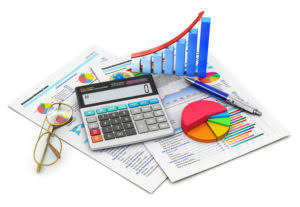
Accumulated depreciation on any given asset is its cumulative depreciation up to a single point in its life. For tax purposes, the IRS requires businesses to depreciate most assets using the Modified Accelerated Cost Recovery System (MACRS). Other times, accumulated depreciation may be shown separately for each class of assets, such as furniture, equipment, vehicles, and buildings.
- Tracking the depreciation expense of an asset is important for reporting purposes because it spreads the cost of the asset over the time it’s in use.
- Options trading entails significant risk and is not appropriate for all customers.
- In some financial statements, the balance sheet may just show one line for accumulated depreciation on all assets.
- In accrual accounting, the “Accumulated Depreciation” on a fixed asset refers to the sum of all depreciation expenses since the date of original purchase.
- The calculation of Accumulated Depreciation relies on several assumptions and estimates, such as an asset’s useful life and residual value.
- To calculate accumulated depreciation, sum the depreciation expenses recorded for a particular asset.
It doubles the regular depreciation approach to expend more depreciation costs in the earlier years of an asset’s useful life and less in the later years of the asset’s lifespan. It is used with assets that lose a lot of value early in their useful life. Subtracting accumulated depreciation from an asset’s cost results in the asset’s book value or what is accumulated depreciation carrying value. Hence, the credit balance in the account Accumulated Depreciation cannot exceed the debit balance in the related asset account. Accumulated Depreciation is credited when Depreciation Expense is debited each accounting period. An asset is a valuable resource owned by a company, which can be used to generate future economic benefits.
How does proration affect asset depreciation reporting?
To calculate accumulated depreciation, first choose the number of years you want to calculate it for. Accumulated depreciation is an asset under generally accepted accounting principles (GAAP) — a commonly followed collection of accounting guidelines that organizations use in reporting their financial numbers. In our PP&E roll-forward, the depreciation expense of $10 million is recognized across the entire forecast, which is five years in our illustrative model, i.e. half of the ten-year useful life. Since the salvage value is assumed to be zero, the depreciation expense is evenly split across the ten-year useful life (i.e. “spread” across the useful life assumption).

The equipment is going to provide the company with value for the next 10 years, so the company expenses the cost of the equipment over the next 10 years. The philosophy behind accelerated depreciation is assets that are newer, such as a new company vehicle, are often used more than older assets because they are in better condition and more efficient. Here is how to calculate the accumulated depreciation using each of the methods mentioned above. In accounting, assets are resources owned by a company with economic value, such as cash, inventory, or property.
How Are Accumulated Depreciation and Depreciation Expense Related?
Your business can make better decisions when you understand the financial status of assets. Watch this short video to quickly understand the main concepts covered in this guide, including what accumulated depreciation is and how depreciation expenses are calculated. A liability is a future financial obligation (i.e. debt) that the company has to pay.
They include straight-line, declining balance, double-declining balance, sum-of-the-years‘ digits, and unit of production. We’ve highlighted some of the basic principles of each method below, along with examples to show how they’re calculated. Different companies may set their own threshold amounts to determine when to depreciate a fixed asset or property, plant, and equipment (PP&E) and when to simply expense it in its first year of service. For example, a small company might set a $500 threshold, over which it will depreciate an asset. On the other hand, a larger company might set a $10,000 threshold, under which all purchases are expensed immediately. As noted above, businesses use depreciation for both tax and accounting purposes.
How to calculate annual depreciation and accumulated depreciation
We will also discuss how the accumulated depreciation is calculated for these two methods. The company has a useful life of 6 years and a salvage value of $50,000 at the end of its useful life. For that reason, the annual depreciation expense in year 3 must be limited to only $2,200. Commercial real estate is a cornerstone of the business world, offering opportunities for investors to secure their financial future.

Recent Comments